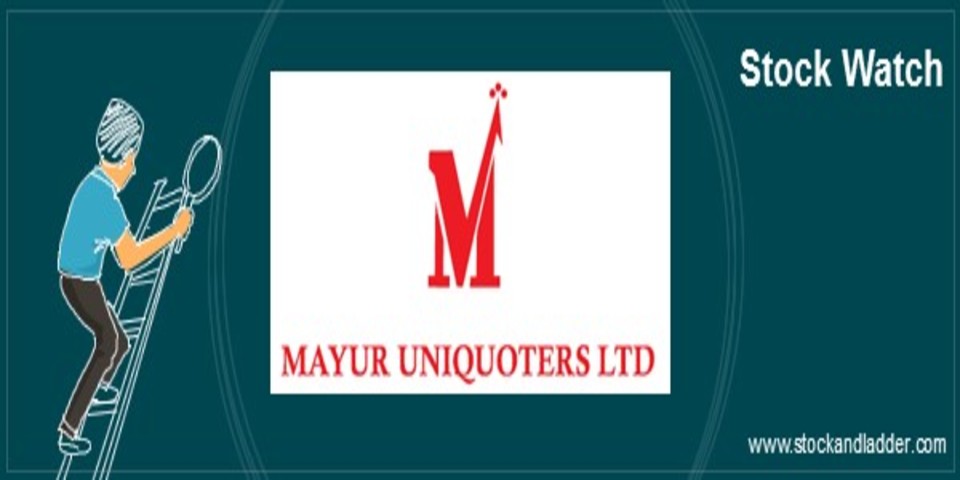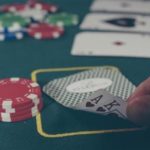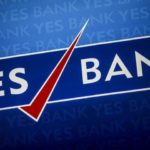All things are artificial, for nature is the art of God – Sir Thomas Browne
Mayur Uniquoters Limited (MUL) is engaged in manufacturing and sale of synthetic leather commonly referred to as artificial leather. MUL is India’s largest producer of synthetic leather and also a key vendor globally along with KURARAY, NAN YA Plastics, TEIJIN and Toray Industries in the USD 24 billion synthetic leather industry.
Synthetic leather comprises of a cloth base / fabric quoted with a synthetic resin (poly vinyl chloride or PVC) to resemble and feel like natural leather. Synthetic leather is 3 to 4 times cheaper than natural leather along with being more durable and being easily available. It’s used in multiple industries like footwear, automobile, furnishing, and fashion (bags, wallet, and clothing) among others.
MUL has been on my watch list for some time now. The implementation of GST, ban on trading of cattle for slaughter and the crackdown on illegal abattoirs pushed up MUL higher up my watch list. With the announcement of a possible second buyback of shares in as many years, I decided to take the plunge and have a closer look into MUL’s business.
[sta_anchor id=”basic-script”]Basic Scrip Details[/sta_anchor]

[sta_anchor id=”business-model”]Business Model[/sta_anchor]
The business model of MUL is pretty simple to understand. MUL is in the business of manufacture and sale of artificial / Synthetic leather catering to multiple industries and has a corporate vision of being a preferred supplier to the leading OEM’s in the world.
MUL targets companies in multiple industries / sectors.

MUL is primarily a B2B player with the bulk of the revenue comes from the footwear and automotive component (upholstery) segments. MUL is striving hard to move up the value chain by offering premium products to global OEM’s (Ford, Chrysler etc.) on back of its investments in R&D.
The company is also in the process of setting up a plant to manufacture another type of synthetic leather called polyurethane (PU) leather which has better margins, higher realizations and bigger growth potential. It is also taking the first steps of building a brand in the retail furnishing segment and is in the process of setting up the national distributor chain.
[sta_anchor id=”financial”]Key Financial Data[/sta_anchor]

Thoughts on the business
MUL has multiple tailwinds from an industry perspective as well as factors specific to the company which are positive for the business.
Positives
Growing existing Industry Verticals
Footwear
Footwear industry is the largest segment for MUL and it brings in about 38% of MUL’s of its revenues. The company counts who’s who of the Indian footwear industry including BATA, Action, Lancer, Relaxo, Paragon, VKC group, Lunar, Lehar, Carbon, Elegant among others as its clients.
India is the second largest producer of footwear globally behind only China. The global footwear industry is expected to cross USD 375 billion by 2024 with a CAGR of 5%.

According to a KPMG study, the Indian retail footwear market is expected to be USD 26 billion from the current USD 5 billion size fueled by rising standards of living, fashion consciousness and shifting of players from the unorganized to organized sector.
Currently the ratio of synthetic leather to natural leather in the Indian footwear industry is 80:20 which implies that MUL caters to the largest sub segment of the industry.
Automotive
The growing automotive industry segment brings in about 22% of MUL’s and the company counts marque players like Ford (USA), Ford (India), Chrysler (USA), Maruti, Tata motors, Eicher motors, Hyundai, Mahindra, Swaraj, Honda motorcycles , LML as its client. The company targets both the domestic and export markets. It supplies to both OEM’s as well targets the auto replacement segment for upholstery.
The growth in this segment will come from the general industry growth as well as signing supply contracts with newer OEM’s. Global automotive interior leather market is expected to grow from USD 25 billion in 2015 to USD 40 billion business by 2024 at a CAGR of 5.5%. With India becoming a hub for automobile industry globally the demand for automotive synthetic leather is only going to increase which augurs well for MUL.
Great set of financial numbers
“Look for companies with high profit margins” Buffet
If we take a long term view of the past 10 years (Ignoring the short term results of the past few quarters where the performance was tepid due to various reasons including demonetization) then MUL boasts of a great set of numbers. The key numbers:
- Sales growth at CAGR 20% over 9 years
- Profit before tax (PBT) growth at CAGR 34% over 9 years
- Net profit growth at CAGR 35% over 8 years
- Current Net profit margin of over 17%
- Average Debt-Equity ratio of 2 over 5 years
- Average Return on Equity (ROE) over 5 years at 29%
- Return on Investment capital for FY 17 at 30%
Long runway for growth in Newer Segments
PU leather segment
Increasing fashion trends and rising standard of living has attracted the major international brands to the market. This has resulted in demand for PU (polyurethane) synthetic leather which is much more superior and premium than the conventional PVC leather.
Currently the demand in the local market is met by importing few million meters of PU leather from China. MUL is in the process of setting up a PU plant in Gwalior which when operational will result in tapping the readily available market, getting higher margins and better realization per metre.
Furnishing segment
Globally synthetic leather is used in many industries including footwear and automotive segment. The other industries include Furnishing, Interior design, clothing, sports goods, fashion accessories. Mayur has taken the initial steps of expanding its offering by entering the furnishing (interior design, bean bag covers, furniture upholstery etc.)
A successful entry into a new segment could be the precursor to expand the offering to multiple industries. This provides MUL with a long run way for growth by going for a larger pie in the existing segments as well as taking a part of pie in newer segments
Cost efficiency
A focus on continuously trying to reduce your cost of production and passing on some of the savings to your customer is a powerful value proposition and moat which is harder to breach.
Manufacturing Plant in South India
The company is in the process of setting up a plant in Mysore, Karnataka. This would help it respond quicker and server many of the key customers who are located in Southern India.
Let us a footwear plant in Chennai needs to be supplied the material. Whether a truck starting from Jaipur or the one from Mysore will be helpful to both MUL and the customer? When the plant is operational, it should help reduce the transportation time for deliver by few days (by road) at least as well as provide significant savings in the logistical costs involved.
Backward Integration
Another popular way for driving the operational efficiency and striving for cost effectiveness is a strategic backward integration strategy. The company has invested money to produce the knitted fabric (key raw material) in house which has resulted in complete control of the manufacturing process end to end.
This backward integration also meant deriving cost efficiency resulting in margin expansion. This will also help MUL better service the customers maintaining lesser inventory.
Other Factors
Supply constraints with Natural leather
The recent ban on trading of cattle for slaughter as well as the government crackdown on illegal abattoirs have led to a temporary reduction in availability of animal hide which is needed for the leather tanneries. This scarcity may lead to greater demand and adoption for synthetic leather which is positive for the company.
Negligible debt
“Look for companies that do not have a lot of debt” Walter Schloss
Another good aspect of MUL’s business is the negligible debt it carries in its balance sheet. The capacity additions and new plants are majorly funded from internal accruals and only a relatively small portion coming via loans. The debt equity ratio currently stands at a healthy 0.13% and the 5 year average debt equity ratio comes at only 0.2% considering the significant capacity addition done.
Improved credit rating
As per the latest balance sheet (YR 2016-17), the credit rating of MUL has increased by one notch for long term facilities from CARE AA- (Double A Minus) to CARE AA (Double A) and for short term facilities, CARE has reaffirmed the rating as CARE A1+ (A One Plus).
Concerns
“When investing, pessimism is your friend, euphoria the enemy”- Warren Buffet
My underlying thought process before investing in a stock is to take a critical look trying to identify as many things that could possibly go wrong and then see if the idea still makes sense for investing.
It’s best to remember Murphy’s Law “If anything can go wrong, it will” before betting on an investment idea.
Key concerns:
Next who?

Mr Suresh kumar Poddar, the current CEO & MD of MUL has done a phenomenal job for taking the company to great heights from a standing start in 1994. However, Mr. Suresh Poddar is aged north of 70 years and in an interesting twist his son (Manav Poddar) has abruptly resigned in early February this year to pursue “other business interests”
This attracts the key man risk and the issue of effective succession planning. It is possible that the son-in-law who is also with the company for few years may provide the continuity or even a professional board may be set up. We don’t know how this will pan out and hence we should be cognizant of the key man risk / succession planning challenge the company faces.
Toxic impact and Environmental pollution
The production of PVC leather requires large amounts of chlorine and produces dioxin as a byproduct. Other toxins involved in its production are lead (impacts brain development and impairs cognitive ability), cadmium and organotins (suppresses the endocrine and immune systems). PVC also contains phthalates, another known carcinogen linked to asthma and reproductive problems.
PVC is a grade 3 plastic and hence cannot be recycled leading to difficulties in waste management and environmental pollution. The harmful effects may lead to activism by environmental enthusiasts or greater awareness among general public leading to lower demand / market for PVC leather.
Technological Obsolescence
PVC has been around us since 1920 and is a 100 year old process. In today’s world of Apple and Amazon, every industry is subject to disruption. There are technological advances also in the manufacturing processes like 3D printing which are disrupting the way we manufacture.
Who knows the 3M’s of the world are very close to launching a cheaper, durable and more importantly non-polluting and non-toxic? What this means is that like every other company, MUL is also exposed to technology risk and product obsolescence risk. Also new competitors may emerge from totally new industries. Unlike the famous Wrigley’s chewing gum example it is becoming increasingly difficult to predict for 10 years.
Industry concentration risk
MUL derives about 70% of its revenues from just the two industries: Footwear and Automotive segments. The negative effect was evident during the demonetization period when the biggest segment namely footwear industry was hit which in turn resulted in de-growth and tepid results.
MUL is trying to overcome this by entering new segments like furnishing the effect of which will take a few quarters to show up. Also, the fate of the forays into newer segments is not guaranteed to succeed.
Fierce competition
Every industry faces competition to a certain extent. In the case of MUL however the competition is intense from the Chinese players as well as from the Indian players (both the organized and unorganized players). This has resulted in tepid growth in sales over the last few years. MUL has grown at only 1.1% CAGR over the last 3 years and currently operates at only 85% capacity.
It is very difficult to challenge the Chinese players on cost and scale. Domestically also the unorganized sector can again challenge the organized players on cost or set up a smaller unit closer to the customer site.
Risk of rising fuel prices
As per the 2015-16 annual report 80% of the raw material (like PVC Resins and Plasticizer) is dependent on crude oil. The price of crude oil has fallen significantly from over USD 100 in 2014 to around 61 USD currently.

Any dramatic rise in prices of crude oil will have a negative effect on the cost of production and profit margins as a large percentage of components are dependent on crude oil.
Valuation
Valuation calculations done have been consciously kept out of this piece as this is not a recommendation piece but an informative post. Also decisions to buy are a combination of multiple factors including one’s circle of competence, risk appetite and the desired level of margin of safety. Not getting into multiple valuation models but even by the simple PE method the stock is not definitely cheap at 24 X.
Final Thoughts
The synthetic leather industry in itself has multiple things going for it like implementation of GST, ban on trading of cattle for slaughter, rising standards of living, economic prosperity and fashion consciousness providing the necessary impetus for growth of the industry.
Within the industry, MUL is a well-run and tightly managed business, boasting of a great set of financial numbers with a long runway for growth.The most critical thing which investors should be aware of is the key man risk or succession planning issue facing the company right now.At current prices, the scrip is definitely not cheap but the business has all the good ingredients which makes it worthy of being included in your investing watchlist.
Liked the Post? Share it with friends.
Please do follow me on Twitter (@stocknladdr) where I share a lot more interesting things I read.
(Disclosure: Not invested currently, No positions)
(Disclaimer: No content on this blog should be construed to be investment advice. You should consult a qualified financial advisor prior to making any actual investment or trading decisions. All information is a point of view, and is for educational and informational use only)
Relate Posts
Do you love Reading?
Check out the best books to read at the Superinvestors Bookshelf Let’s stay connected, Follow me on Twitter @Stocknladdr



